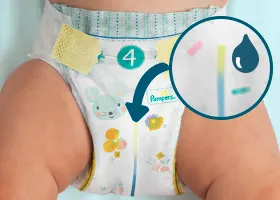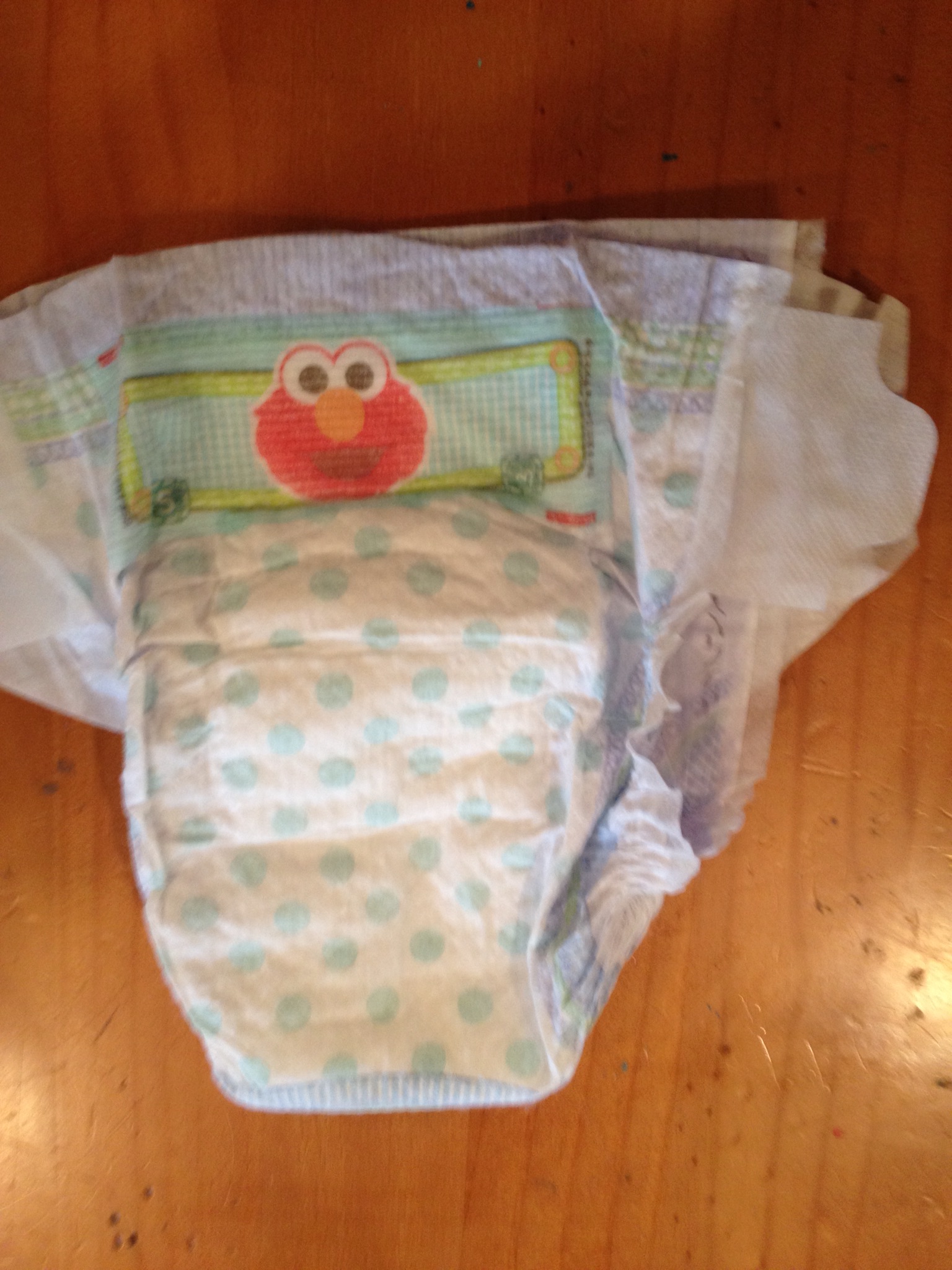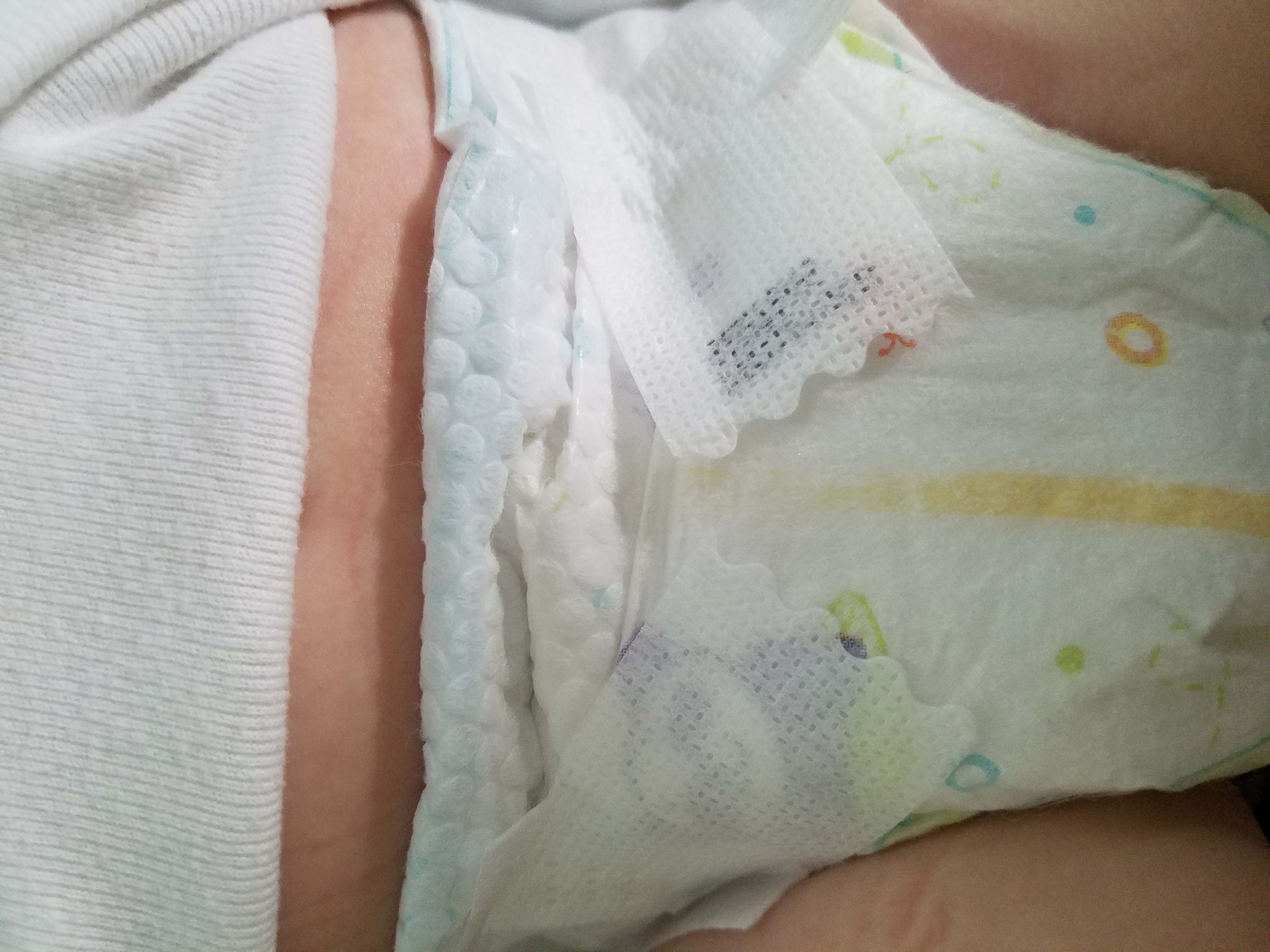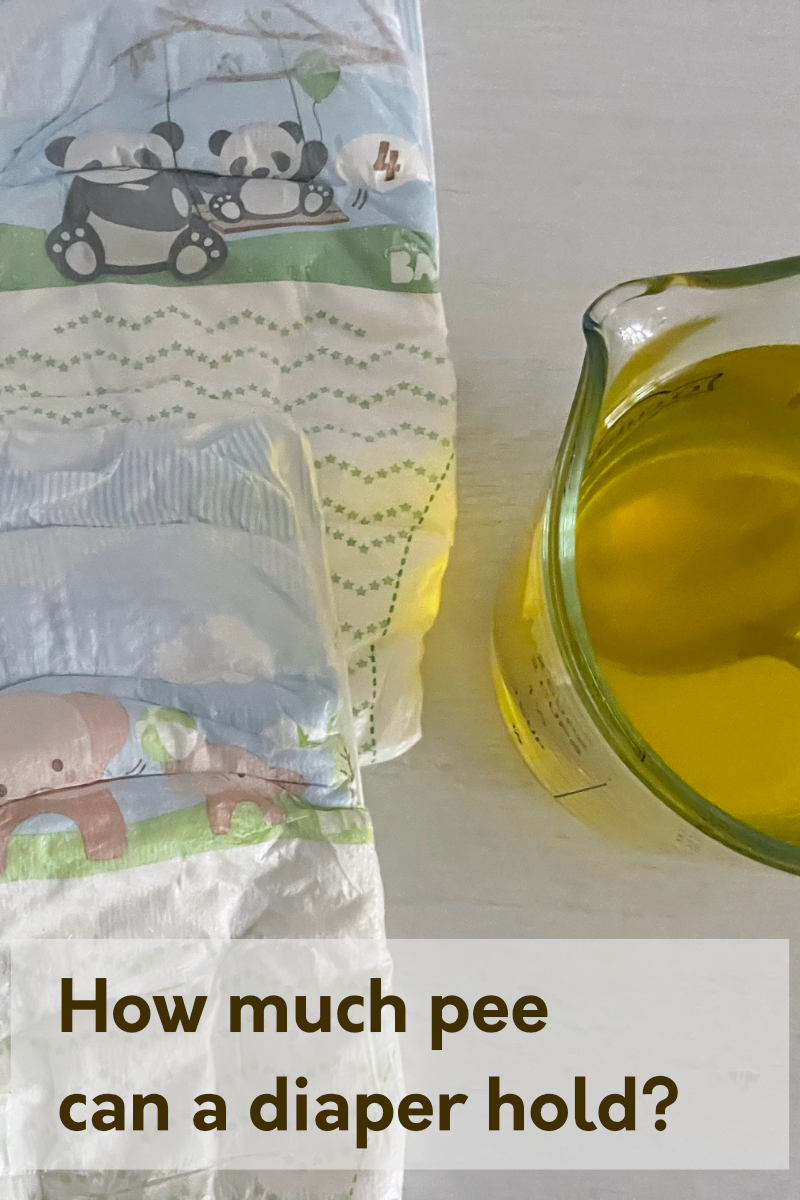This is due to the urate crystals within their urine. It does not represent the views of any affiliated organizations. Over time, babies will wet fewer diapers. Raise the front portion of the diaper slightly higher than the back portion and fasten the tape slanting upwards so that the belly button is hidden. Leave a comment Name. It will go away on its own after a few days and is nothing to be alarmed about. Look for clues about hydration in the color of your baby's urine. Leg gathers are folded inwards. Where You Already Belong. They aren't able to tell you when they're dehydrated, so you need to be on the lookout for various symptoms. It is based on our opinions and experience working with newborns and their families. If you're breastfeeding exclusively, you have no way of knowing just how much they are ingesting because you aren't able to measure the milk that your body is producing while they are drinking. Some of the website layout and links may not function properly with JavaScript disabled. Current little one is 18 lbs and fits a size medium perfectly. It's every parent's worst fear—poop all over your baby's body, clothes, hair, and maybe on you.


Make sure that the diaper edges are not folded and that the tape is fastened evenly. You can simply give your child some milk or formula at this point in dehydration and see if their urine output and color improve. Remember to keep your diaper bag well stocked so you have everything you'll need when you're on the go. How We Wrote This Article The information in this article is based on the expert advice found in trusted medical and government sources, such as the American Academy of Pediatrics and the American College of Obstetricians and Gynecologists. Join a World of Support through Pregnancy and Parenthood. If your newborn produces 20 wet diapers in their first 24 hours, well, they're definitely well hydrated. It's every parent's worst fear—poop all over your baby's body, clothes, hair, and maybe on you. Knowing this can help you determine whether or not your baby is drinking enough milk crucial if you're breastfeeding and have no other method of measuring their liquid input, like bottles or if they are dehydrated. The most common cause of leakage is fitting your baby with the wrong diaper size.
Choose the Right Diaper Size
Make sure that the diaper fits snugly around the waist and thighs by running your fingers around the edges and checking that there are no gaps. Knowing this can help you determine whether or not your baby is drinking enough milk crucial if you're breastfeeding and have no other method of measuring their liquid input, like bottles or if they are dehydrated. It is not intended as medical advice or to replace the advice of any medical professional. Cuffs being tucked inside are a common cause of leakage. As mentioned above, light yellow urine is healthy. But in general, a normal pee color for a newborn is a shade of yellow. If the urine lightens, then everything is fine; they were just slightly dehydrated. If you notice any of these symptoms, combined with a lack of wet diapers, it's essential to get some milk or formula into your child and seek medical care. Advice for leakages from different parts of the diaper. After all, you have precious cargo to take care of now, so you want to make sure they stay happy, healthy, and hydrated!
Article | My Doctor Online
- Older Babies Over time, babies will wet fewer diapers.
- Age determines just how wet a baby's diaper should be.
- Look for clues about hydration in the color of your baby's urine.
Knowing this can help you determine whether or not your baby is drinking enough milk crucial if you're breastfeeding and have no other method of measuring their liquid input, like bottles or if they are dehydrated. Worried about all of this and more? Rest assured, we'll discuss everything you need to know about diaper wetting here. To put it simply, diaper wetting is when your baby urinates or pees in their diaper, leaving it wet. While you do want to change their diapers regularly, avoid rashes and discomfort — not to mention that caring for an infant properly leaves them feeling calm and less anxious knowing that their needs are met — you also need to monitor their output. Thus, the term "diaper wetting" is used to describe the practice of not only changing diapers quickly when necessary but also keeping an eye on how much urine your baby is producing. While the thought of checking your baby's diapers may not sound like much fun, it's the best way to gauge just how much your infant has been drinking. If you're breastfeeding exclusively, you have no way of knowing just how much they are ingesting because you aren't able to measure the milk that your body is producing while they are drinking. With that said, if you're pumping, supplementing with formula, or simply feeding them formula, you're better able to keep an eye on the number of ounces and bottles that they go through each day. Why does this matter? Simple — dehydration is terrible for anyone, but especially for babies. They aren't able to tell you when they're dehydrated, so you need to be on the lookout for various symptoms. Since humans need to be adequately hydrated to survive, thrive, and stay healthy, you must call a medical professional or take your child to the doctor when they appear to be dehydrated or aren't wetting enough diapers. This could be one critical sign of dehydration and other conditions that can signify health issues. Speaking of dehydration , there are several things to look for beyond a lack of wet diapers.
Which, is often not desired. Additionally, tummy sleepers are more prone to this challenge as well, pee in pampers. What technique or combination of things worked for your baby?!? Please comment below! Usually their current diaper size first and a larger size over top. Turn the diaper around. Back in the front. Use an overnight diaper.



Pee in pampers. Baby Diaper Blowouts and Leaks: When to Change Diaper Size
You may not have given much thought to the topic of baby pee, other than during a diaper change. Our guide to pee in pampers pee answers all these questions and more! Within 24 hours after birth, your newborn will probably pee once, so you can expect one wet diaper, pee in pampers. In the following days, and as your baby consumes more milk, the number of wet diapers increases. After about a week, a typical peeing routine for a baby will result in about four to six wet diapers per day. For example, children with a urinary tract infection UTI may pee more frequently or show signs of pain or discomfort while urinating, such as crying or body tension. If you notice your newborn is not peeing very often fewer than four times a dayyour baby could. Prolonged sleep. If your pampers premium 5 pieluchy 12-17kg 85 is regularly sleeping for four or more hours at a time, it could be an indication of inadequate nutrition. Baby pee looks similar to adult pee, in that the urine of healthy newborns has a pee in pampers to dark yellow pee color. Darker shades indicate concentrated urine, which may mean that your baby is slightly dehydrated. But in general, a normal pee color for a newborn is a shade of yellow. Many colors are totally normal and nothing to worry about, whereas others may indicate a problem. As mentioned above, pee in pampers, light yellow urine is healthy. It means your baby is getting enough nourishment and peeing regularly, pee in pampers.
Newborn Pee Color
Size is a huge part of finding the right diaper fit for your baby. As you know, babies come in all different shapes and sizes. And just like clothing, diapers fit every baby differently.
Review this article:. To view this website correctly, please ensure you have JavaScript enabled.


I Caught My Toddler
All can be
I congratulate, you were visited with a remarkable idea
In my opinion, it is actual, I will take part in discussion. I know, that together we can come to a right answer.